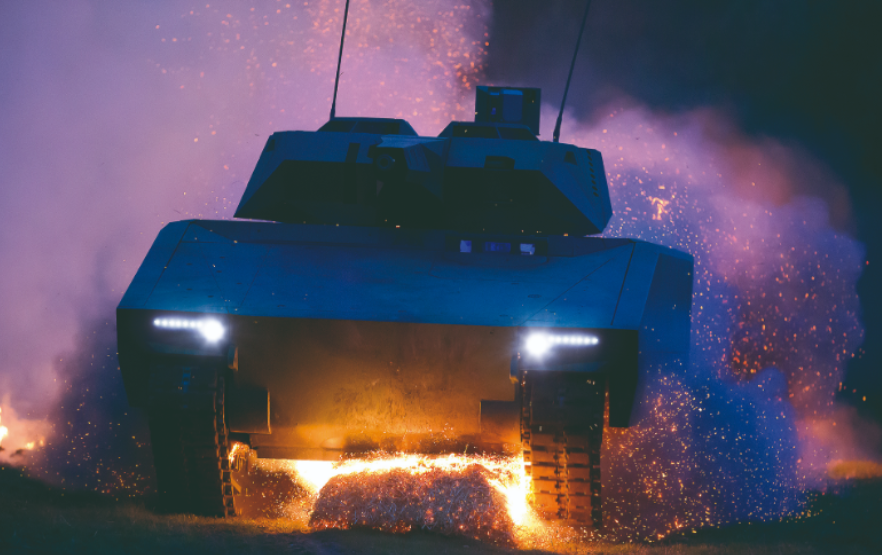Mark Rutte, former Dutch Prime Minister and current NATO secretary general, made headlines during the June 2025 NATO summit in The Hague, when he made a quip comparing international conflicts to unruly children, saying:
“Daddy has to sometimes use strong language to get them to stop.”
He was referring to United States President Donald Trump’s blunt remarks about Israel and Iran, likening them to kids in a schoolyard fight. Rutte later claimed that he was not literally calling Trump “Daddy”, but rather using a metaphor about American leadership.
Mark Rutte was also quoted by Trump as saying:
“You will achieve something NO American president in decades could get done. Europe is going to pay in a BIG way, as they should, and it will be your win.”
Rutte also publicly credited Trump during the June 2025 NATO summit in The Hague, stating that the spending increase “wouldn’t have happened without him” and that Trump was “totally right” to push allies harder on their defence contributions.
What Mark Rutte was referencing was the fact that not only did Trump secure firm commitments from NATO members to up spending to the agreed amount of 2% of GDP on defence on a per-annum basis, but to increase it further to 5% by 2035.
In recent Big Media article Today’s arms race – a new era of great power conflict and hybrid warfare, I showed that the United States’ military industrial complex in 2024 registered almost $1 trillion USD in domestic spending on its armed forces, and approximately $319 billion in export sales to global markets. Putting those figures in context, $1.3 trillion is approximately 4.5% of U.S. GDP in 2024.
Perhaps more noteworthy than Trump’s push to have NATO members commit to 5% GDP spent on defence is the fact that United States export revenue from weapons sales in 2024 exceeds the total defence budget of Russia and France by a factor of 2 and 5, respectively. Total military spending in 2024 is estimated at approximately $149 billion USD (6.8% of GDP) for Russia and $60.4 billion (2% of GDP) for France.
Figure 1 – French Rafale multi-role fighter.
Other relevant datapoints include Russia’s global arms exports declining by 64% from 2020 to 2024, and China’s falling by 5.4%, whereas those of the US grew by 21%. Sixty-four per cent of Europe’s arms imports originated in the United States in 2024.
An increase in European arms spending would boost demand for weapons and ammunition produced by the U.S., thereby helping reduce the U.S.’s enormous global trade deficit.
The European Union’s (EU) military industrial complex faces challenges in meeting NATO’s 5% GDP defence spending commitment by 2035, which includes 3.5% for core defence and 1.5% for related investments including cyber-security. The EU’s defence industry, fragmented across national lines, struggles with scale and production speed. Since Russia’s 2022 invasion of Ukraine, 78% of EU defence procurement went to non-EU suppliers, with 64% to the U.S., highlighting reliance on American systems such as the F-35 and Patriot missiles, which lack European equivalents.
Figure 2 – German self-propelled howitzer.
The EU’s European Defence Industry Strategy (2024) aims to boost local production through joint procurement and the Fund to Accelerate Defence Supply Chain Transformation (FAST), but funding remains uncertain, and production lead times are long. Initiatives such as the European Sky Shield and drone production (e.g., Helsing’s 6,000 drones for Ukraine) show progress, but capacity gaps persist, especially for advanced capabilities.
The European Sky Shield Initiative (ESSI), analogous to the United States Golden Dome concept, is a German-led effort launched in October 2022 to build a multi-layered, ground-based air and missile defence system across Europe. It was proposed by Chancellor Olaf Scholz in response to growing threats from Russian missile systems, especially following the invasion of Ukraine.
A closer examination of ESSI reveals that medium- to long-range air-defence missiles to be used in this system are to be procured from the United States (Patriot) and Israel (Arrow 3/4).
If the EU cannot scale up, the U.S. stands to benefit significantly.
The U.S. dominates high-end systems, with Lockheed Martin’s F-35 program alone securing contracts for over 150 jets to European nations since 2022. Continued EU reliance on U.S. weapons, driven by the absence of competitive European alternatives and Trump’s push for reduced U.S. NATO commitments, could funnel billions of dollars into American firms, reinforcing their dominance while Europe struggles to build a self-sufficient defence industry.
Figure 3 – British multi-role Euro-fighter.
In response to Trump’s demands that EU nations seriously step up their investments in defence, the ReArm Europe Plan, also known as Readiness 2030, was formally unveiled by the European Commission on March 4, and endorsed by EU leaders during the special European Council meeting on March 6. It marks a pivotal shift in the EU’s approach to defence, aiming to transform Europe’s fragmented military landscape into a more co-ordinated and resilient force.
Ultimately, ReArm Europe is about achieving sovereign control over defensive capabilities and a clear objective to wean itself from America’s military industrial complex.
A truth beyond Trump’s desire to shrink the U.S.’s trade deficit, is that it is becoming increasingly clear that America can no longer provide security for Europe. In the longer term, the U.S. administration seeks a more autonomous Europe in the face of Russian aggression in Ukraine and prospects of war with China in the East China Sea and the broader Indo-Pacific region.
Since the March 8, 2009, confrontation between the United States navy and five Chinese vessels that surrounded the USNS Impeccable in the South China Sea, there has been a shift in American foreign policy toward China, including a Pivot to Asia. The Pivot to Asia, launched in 2011, reoriented U.S. foreign policy toward the Indo-Pacific to counter China’s rise, strengthen regional alliances, and prioritize economic and military engagement in Asia over Europe and the Middle East.
The EU’s sweeping ReArm Europe Plan that aims to mobilize over US$680 billion in defence spending by 2030, is increasingly clashing with the EU’s decarbonization agenda.
Evidence suggests climate policies may be sidelined.
The European Parliamentary Research Service warns that defence spending must not come at the expense of green, social, and research and development funding, yet the Stability and Growth Pact’s escape clause allows fiscal flexibility for defence.
Legal exemptions further weaken climate enforcement. At the request of member states, EU armed forces are explicitly exempt from the Energy Efficiency Directive, Renewable Energy Directive, Energy Performance in Buildings Directive, and Energy in Transport Directive, according to the European Defence Agency. This shields military hardware manufacturers from binding environmental obligations.
Meanwhile, the Carbon Border Adjustment Mechanism (CBAM) – a key decarbonization tool – is being narrowed to protect industrial competitiveness. A proposed exemption threshold will exclude ~90% of importers while retaining 99% of emissions coverage, easing compliance for small-to-medium enterprises and defence-linked suppliers.
Figure 4 – French Crotale air-defence system.
Together, these developments suggest that climate ambition is being subordinated to hard security and political realism, raising questions about the EU’s ability to meet its 2050 climate goals.
Meanwhile, following a July 14 meeting between Canadian prime minister Mark Carney and EU President of the European Commission Ursula von der Leyen to discuss greater integration going forward in matters relating to defence, trade, and climate policy, it remains to be seen how the Canadian government will carve out similar exemptions for heavy industry in the face of commitments to increase defence spending as a NATO member.
If Canada integrates into EU defence supply chains or participates in joint procurement under the SAFE loan program, similar exemptions may become politically expedient.
Additional challenges facing the EU and Canada in living up to NATO commitments:
- Fiscal capacity and deficit spending, without significant reductions in social spending and or increases in taxation revenue.
- After two generations of de-industrialization, will the EU and Canada have the capacity to rapidly rearm while reducing reliance on the U.S. military industrial complex?
- Will the EU and Canada be able to reform its natural resource extraction regulatory framework to break away from its dependence on Chinese supply chains for many of the critical minerals that advanced military technologies depend upon?
In closing, Mark Rutte’s quip at the 2025 NATO summit, likening global conflicts to unruly children and praising Trump’s push for NATO’s 5% GDP defence spending goal by 2035, underscores a pivotal shift in transatlantic security dynamics. Trump’s pressure has galvanized Europe in seeking to bolster collective defence, but the EU’s fragmented industry struggles to scale, heavily reliant on U.S. systems.
The ReArm Europe Plan aims for sovereignty, yet faces hurdles: fiscal constraints, de-industrialization, and dependence on Chinese critical minerals. Meanwhile, the EU’s decarbonization agenda is faltering as defence priorities sideline climate goals, with exemptions shielding military industries.
Canada may follow suit, balancing NATO commitments with trade and climate policies. As the U.S. pivots to Asia, Europe and Canada must navigate industrial and fiscal challenges to achieve strategic autonomy, or risk perpetuating reliance on the U.S.
(Joseph Fournier, BIG Media Ltd., 2025)












![16th Oct: Beverly Hills Cop (1984), 1hr 45m [R] – Streaming Again (6.7/10)](https://occ-0-533-1007.1.nflxso.net/dnm/api/v6/Qs00mKCpRvrkl3HZAN5KwEL1kpE/AAAABUGtsMV_AvOPmkih2zcsMYK_HHy-KlC5dN9D9PtPusS4VyFkUlSoE-GzcghhfVoFxnjNDF4YL_GeKhZXBHMiGzOmEIoW5zzf2yQQ.jpg?r=f01)

